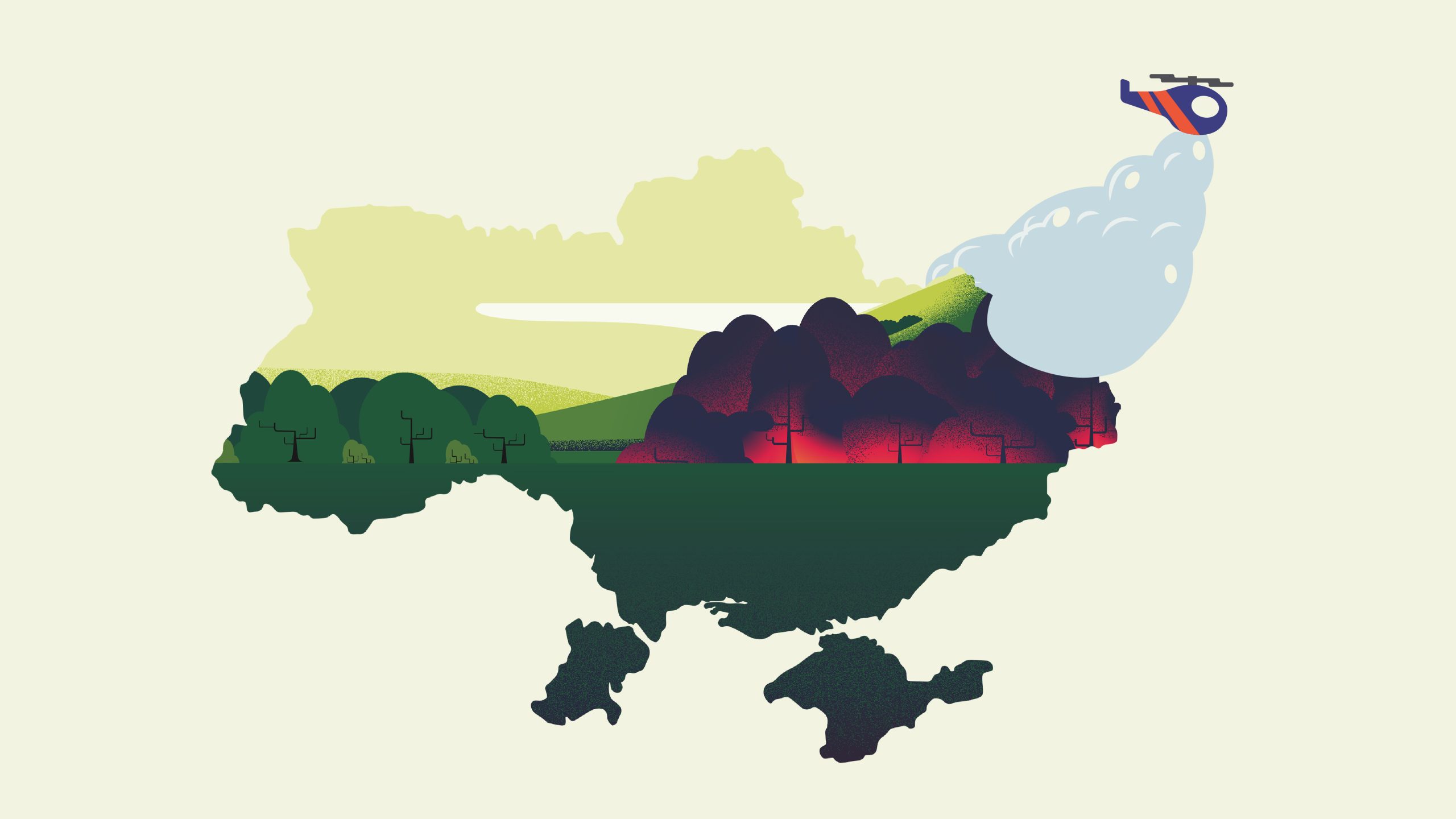Resilience in the midst of a crisis: reshaping the wildfire management strategy in Ukraine
The FirEUrisk team set up a demonstration area in Chernobyl, Ukraine as part of the project in 2021. This zone was of particular interest for the project because of its peculiar radioactivity levels, lack of wildfire management strategies, and shortage of fire response personnel and equipment

An office for wildfire risk management in the area was already established when in February 2022 the troops invaded the country. “We had developed a response center with assessment equipment, but all of it was gone because of the war, even the chairs”, explains Sergyi Zibtsev, director of one of the project partner institutions, the Regional Eastern Europe Fire Monitoring Center (REEFMC).
The war has created new risk factors that no one could foresee, pushing the REEFMC team to reshape their strategy completely.
Adapting to a new reality
The Ukrainian partners of FirEUrisk have given a new meaning to resilience, a core concept in the project, by adapting their work plan to the prevailing circumstances. The team has tried to use the most of winter’s lower temperatures to prepare for summer´s higher risk for unmanageable wildfires. “We aim at predicting when there will be a dangerous period in terms of wildfires in the area, so we can mobilise during these high risk periods and diminish the probability of fires becoming unmanageable,” Zibtsev explains.
The war has worsened the already existing personnel shortage, since fire responders have either given their equipment to the army or gone to the army themselves. It has also brought unexploded ordnance with unknown locations, which limits the terrestrial equipment that can be used to assess wildfire risk, and led to new air traffic regulations that restrict the use of aerial firefighting methods, such as helicopters and planes.
The new approach is being designed assuming that there are landmines in most Ukrainian territories that were directly impacted by military operations, to ensure the safety of citizens and wildfire responders. The team is also replacing aircrafts with drones for reconnaissance, since the Ukrainian army now has more experience with them, they are more likely to be approved by air regulations and they don’t need personnel aboard.
“In addition we are working to find novel ways of assessing the current wildfire risk situation, and design tools for the appropriate forecast of wind, humidity, and vegetation factors that fuel fire,” Zibtsev says.
Collaboration as the winning strategy
In the midst of the current situation, one thing rests assured: if a successful strategy can be developed considering the hardships faced in this zone, other regions with similar or simpler conditions can also be managed.
A key component to making this happen is collaboration across sectors. A significant part of the reshaped work plan in Ukraine has been to bring multiple stakeholders together in training and other collaborative efforts, among others the police, the army, as well as forest personnel.
Working together with other researchers from the field as well as exchanging knowledge and resources is also what inspired the Ukrainian wildfire experts to partner up with the project in the first place. This leading idea hasn’t changed along the way. According to Zibtsev, “there is no project like FirEUrisk in Ukraine, with such a holistic approach in regards to risk”.
